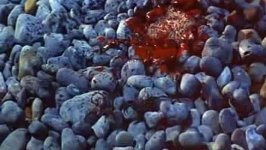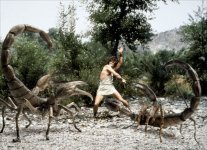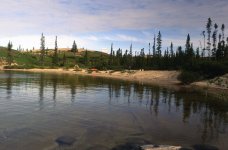Most of my canoe tripping has been in northern Canada, on open tundra or in sparse, spindly spruce near tree line. Virtually no opportunity to hang food.
View attachment 130422
Our approach to protect ourselves, and our food, is to separate our cooking area (See Kathleen, far right), our tent (See far left), and our food (See red canoe, centre). We never take any food into the tent. The cooking area is pretty far removed from the tent. At night, we store all of our gear, including food, under the overturned canoe. I keep my .308 rifle in the tent at night. I think I am far enough away from the canoe, that the bear won't associate the tent with the food. Yet, I am close enough to the canoe that I can hear any potential disturbance at the canoe, and can scare away a potential bear with a warning shot. I can't afford to lose much food on a 3-4 week trip.
Most of our food is double garbage-bagged within Duluth-style canvas packs. We have never suffered any food lost to marauding bears. So far so good. We are back out on the open tundra this summer. We'll see.
There: back on track with the original intent of this thread.





